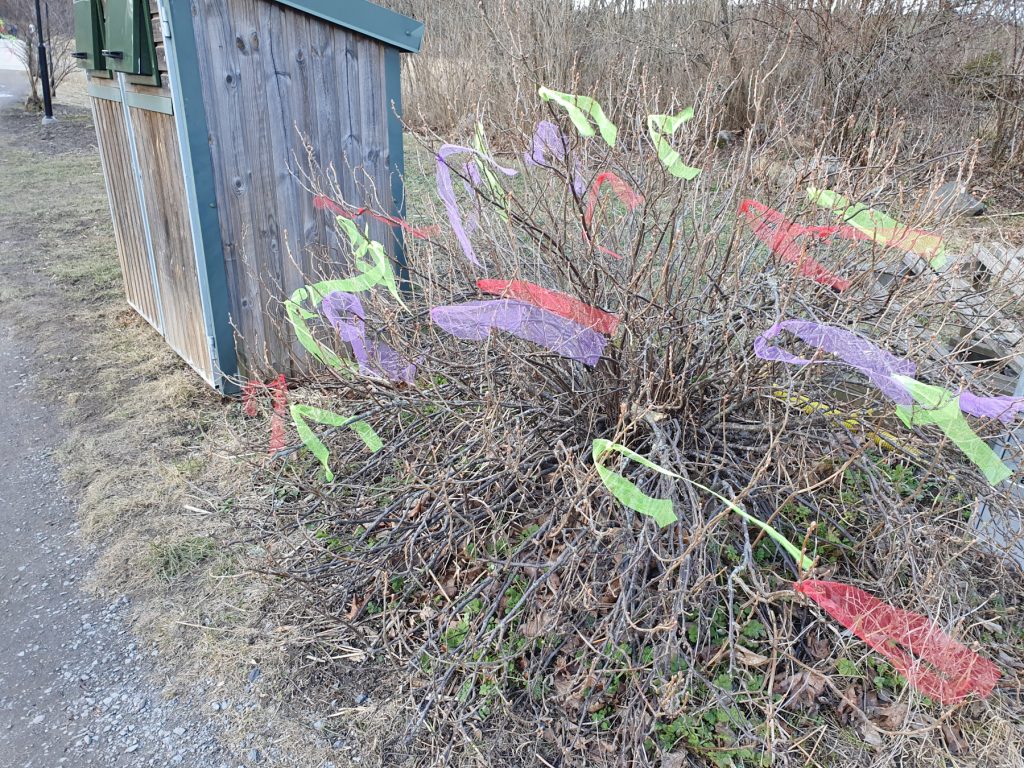On Sunday, at Notholmen, we noticed a few shrubs decorated with coloured bits of material. I also noticed in Hemköp on the way home, that they have started selling bunches of, what appear to be, sticks with brightly coloured feathers attached to the end. It seems the two are connected, and it’s all about Easter.
Apparently, once upon a time, people would whip each other with birch twigs in an attempt to emulate Christ’s suffering. At some point, the coloured feathers were stuck to the ends of the twigs. I don’t know why.
These days, people just buy them and decorate their homes with them. Or shrubs.

The other thing about Easter in Sweden is the fact that, originally, it was all about witches. On Maunday Thursday, the witches were said to fly off to Blåkulla then return on the Saturday. So locals would light big bonfires and dance around them yelling and screaming in order to scare the witches away.
Blåkulla refers to an island where the devil holds an annual feast. This feast was actually a chance for the devil to have unlimited sex with as many witches as possible. The witches would then give birth to toads and serpents. Which doesn’t sound very healthy at all.
Nowadays, there’s no talk of toads. Children just dress up as witches and go door to door asking for sweets. If it sounds a bit like Halloween, then there’s a very good reason why. It’s because it’s the same. Except that, where in the US, people dress up as all manner of things on October 31, here in Sweden, it’s just Easter witches.
The Swedish people are also big into the egg thing. Apparently, given that Easter signals the end of Lent, people went mad for eggs. Real eggs, not chocolate.
Traditionally, eggs stand for rebirth and renewal. In a typical bit of appropriation of pre-Christian festivals, Jesus followers believe the egg symbolises the empty tomb, vacated by Jesus. I assume the yolk and albumen are symbolic of ectoplasm.
The first chocolate Easter egg was not made by an American, surprisingly. That honour goes to France. The first chocolate Easter eggs turned up in Versailles in 1725. The first ones in Britain were produced by Fry’s in 1873.
Back here in Sweden, eggs (real ones) are the chief ingredient for any Easter feast. Along with herring. Of course. The chocolate eggs go to the little witches at your door.
Possibly, the saddest thing about Easter is that it spells the end of the semla season which started back on Fat Tuesday. Well, sad for some. I’m very rare in Sweden in that I don’t like them much.



